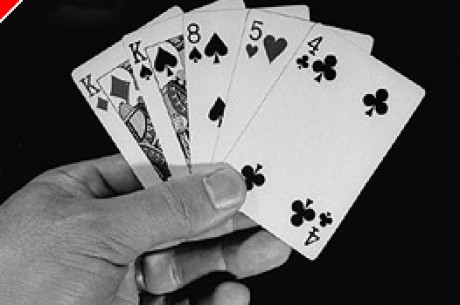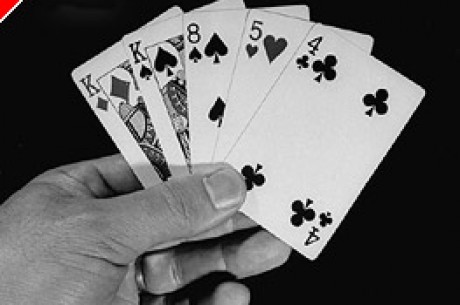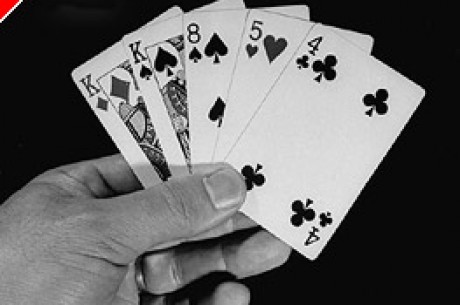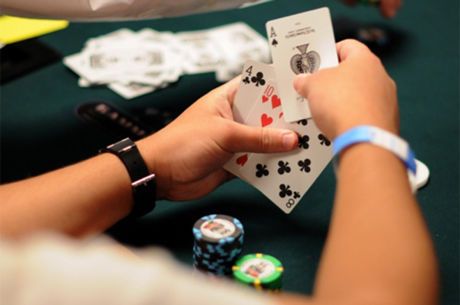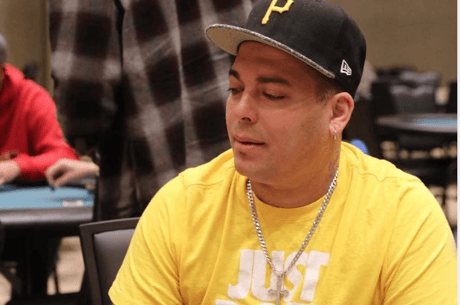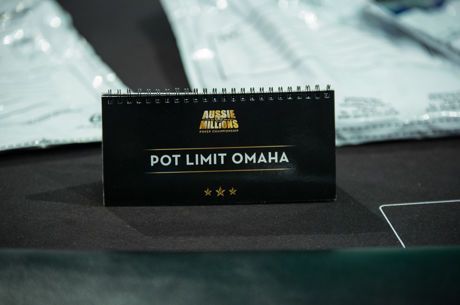Introduction to Omaha Poker - The Temporary Nuts
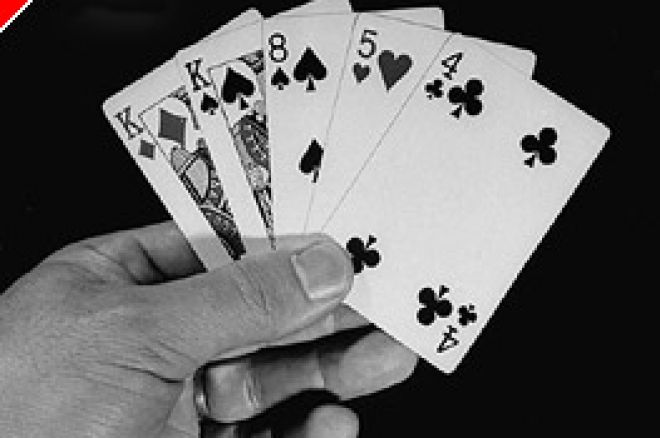
Tony is a regular on-line and card room player living in England. He mostly plays Texas Hold'em and Omaha (High and Split) at fixed, pot and no limit, at both cash and tournament tables.
Introduction
It is a regular occurrence for a poor starting hand in Omaha to turn into something stronger after the flop or the turn or the river, yet simultaneously the same board cards can weaken a strong opening hand held by another player. Because of those possible fluctuations, many players will pay to see a flop whatever the cost and whatever the texture of their hole cards. Players convince themselves that the potential for a positive change is sufficient reason to call a raise, even a pot raise, before the flop. This policy is poor play as I have previously discussed but you have to accept that many players will do it and be prepared. One of the results of this is the appearance after the flop has come down of "the temporary nuts".
A Choice Is Not A Reason To Lose
Omaha is a game of big variations because of the four hole cards each player has from which to choose two cards for his best hand. At each step of the betting process as cards hit the board, the two hole cards that you use to make the best hand can change. This is one crucial aspect that is entirely missing at Texas Hold'em where you are stuck with the two cards you are dealt, albeit one card might be enough to win a hand in that game. You might say that Texas Hold'em gives you the choice of any of 2, 1 or 0 cards from your two hole cards (that's four "combinations"), whereas Omaha offers you any 2 from 4 (that's six combinations). However, using 1 or 0 hole cards at Texas Hold'em weakens your ability to take a pot down whereas any of the six choices at Omaha should be regarded as having equal potential since they always use two hole cards that are unique to your hand and not shared by other players.
This maximises the possibility of making a good hand in Omaha, but always be aware that the term "good hand" is only relative. By Texas Hold'em standards, a set or a straight is a good hand, often a winning one. At Omaha, those hands frequently lose at a full table, especially at limit stakes when players pay to call, often with pot odds on their side.
Short-Lived Joy
It is not uncommon for a player to flop a nut hand, one that cannot be beaten by anyone at that point in time. Let's say you are in a game of pot limit Omaha High and decide to play with a solid hand like Js Td 9d 8s. You raise the pot before the flop to eliminate as far as you can the rag hands that might outdraw you. Three players call your pot-raise. This suggests no-one has anything special like AAxx or AKKQ which ordinarily might justify a big re-raise. Either that or they are not aggressive players. The flop comes down Qc 9h Kc. You have hit the nut straight with your Js Td hole cards. The K high straight cannot be beaten as the cards stand. The question now is how to play it.
In Texas Hold'em, a flopped nut straight like this might tempt you to slow play with four other players still in although you will be hoping to avoid a club on the turn. With that in mind, you might instead think it prudent to put in a big raise to make a flush-chasing player pay a premium for the right to draw! It's a question of how you perceive the risk versus reward having regard to the other players' habits of calling raises.
In Omaha, it is not a question of whether anyone is drawing to the flush or the higher straight, it's a near certainty. Any player holding two clubs is interested although they would do well to be cautious with lower valued clubs, Any player holding AJxx, ATxx, J7xx, T7xx, 76xx, 75xx or 65xx has some interest in a straight draw albeit only the T7 and 76 offer open-ended draws. Some of these players at the low end of the straight really should not pay to draw if they face a raise.
The worst case possibilities for you would be someone holding AJ or AT or any pair of KK, QQ and 99, not to mention KQ, K9 or 98. The ace hands could outdraw your K high straight. The others could all produce full houses. On top of these, anyone with two clubs stands to catch a flush. Finally, someone may also have JT. If they also hold a Q, K or A, then things are not rosy for you.
The end result is that, even before a turn card comes, you may not be able to get rid of one or more opponents with a pot raise. There are simply too many draws out there that could scupper your hand; and that is only by the turn of one card. There are two still to come! Omaha is a drawing game, much more so than Texas Hold'em. With four well-coordinated hole cards, a player can find himself in the desirable position after the flop of having around 20 outs to complete a strong hand. In the pot limit game, that is a compelling case for a pot-sized re-raise because the probabilities of making a worthwhile hand are odds-on with two cards to come. The pot-sized re-raise has the added bonus of putting severe doubt in the minds of your opponents and handing you the added odds of their folding.
Take for example, the earlier hand, Js Td 9d 8s. Let's say the blinds are $1/$2. There were two flat calls of $2, making a pot of $7. You raise for a total bet of $11 (the call of $2 makes $9 in the pot, plus the pot of $9 = $11 total). There are four callers including the blinds so the pot is now $44 and you are in position. So far so good.
After the flop of Qc 9s Kc, you have the nut straight. You have four players who called a pot-sized bet before the flop and they all check the flop to you. Yet, you should realise that your hand is potentially weak, not strong! There are very few cards in the deck that will improve your hand. In contrast it is possible that the others have many out cards to improve to the top straight, a flush or better.
If you check, it will let them all draw for free. If you pot-raise $48 and your stack doesn't exceed $144 after the bet, you stand to be re-raised all-in by a confident player with a monster drawing hand, and he might easily be the favourite with two cards to come. Would you call such a pot-raise? The pot odds would be at best marginal unless he is executing an outrageous bluff move.
That leaves the middle option, a feeler bet to see where you stand. If you bet one-third of the pot, say $15, you should lose the hands that missed the flop and didn't find many draws. Likewise, you might receive calls from passive drawing hands allowing you to see if the turn is harmless or not. If you are re-raised after your $15 bet on the flop, the maximum bet is $ 89 ($15 call + pot of $74). In some ways, it will not matter because it is likely that both players will end up all-in before the river if the betting continues, or unless one or both players have deep stacks.
The fact that the player has confidently re-raised the pot should spell danger. He is either loaded with draws or is playing a strong bluff. It could be a mixture, a semi-bluff.
I am not about to advise the best move for you here because it is probably a coin-toss whether or not you fold and be happy you only lost $26 as against a potential loss of over $200; or you press ahead and hope to luck that your hand holds up and scoop a pot approaching $500. Such are the margins in pot limit Omaha.
Conclusion
The point I am making is that in Omaha, the Temporary Nuts are dangerous. To be dealt the nut hand at the flop can be an accident waiting to happen if the texture of the flop is such that multiple draws are likely to have hit other players' hands. This is especially so if you remaining hole cards do not lend support to improvement. In the example above, your remaining cards were at the low end of the straight and none assisted the flush draw. They are basically dead cards barring a runner-runner miracle on the end.
Exorcism
7 October 2005
Ed Note: Poker Blue are giving away a WPT seat a week. Check it out.

